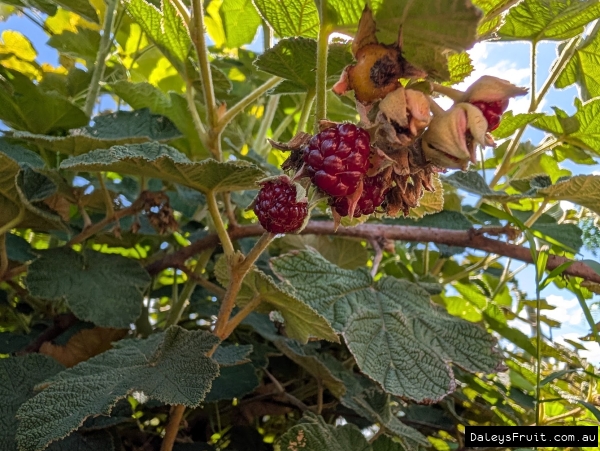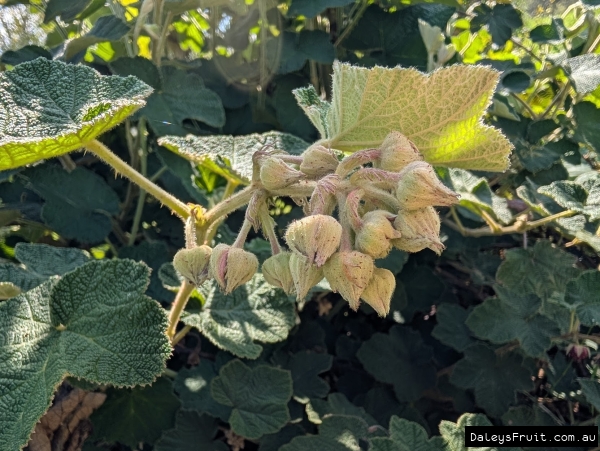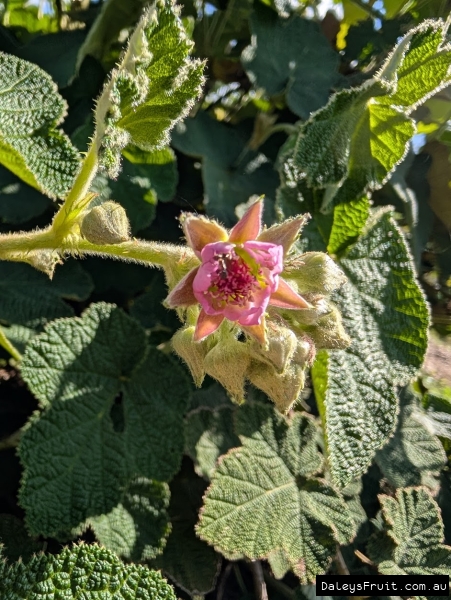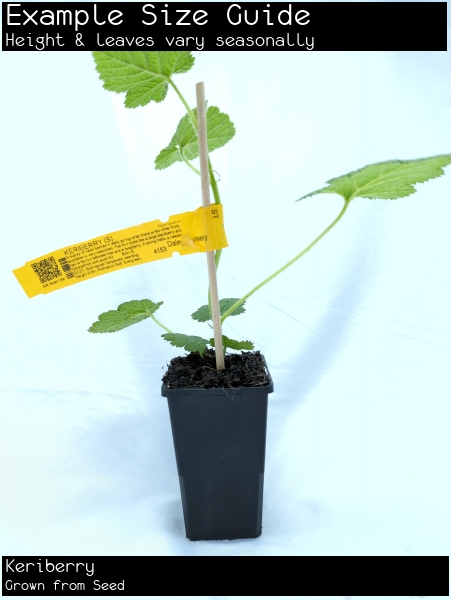Keriberry
Rubus rugosus var. thwaitsii$19.75 ($19.75-$23.90 choose a size)
Specifications of Keriberry
Preferred Climate Subtropical, Warm TemperateLearn About Climate Zones
Grown From SeedlingLearn About Propagation Methods
Max Height (when in the ground with good conditions) 2-5m
Plants required to Pollinate 1 (Self Pollinating)Learn about Pollination
Can it Handle Frosts? Yes
Amount of leaves in Winter? All Leaves (Evergreen)
Quarantine Restrictions to these Areas WA
Water Requirements Moderate Watering
Time to Fruit/Flower/Harvest 2-3 Years
Sun or Shade Full (Sun:80%-100%)
Preferred Soil Type Good Drainage
Soil pH Neutral (6.6-7.3pH)
Fruiting/Harvest Months April, May, June, July, August, September, October
Create a Filter to find similar plants
Customers also bought
These plants are often purchased together. Also check plant information for suitability in your orchard.
Jacaranda - White Grafted
$49.00 ($49.00-$99.00 choose a size)
Guava - Starlings White
$39.00 ($27.00-$49.00 choose a size)
Pandanus - Edible
$37.00 ($24.90-$69.00 choose a size)
Pitanguinha
$19.00 ($19.00-$24.00 choose a size)
Palm - Jelly or Wine Palm
$24.75 ($17.90-$24.75 choose a size)
Miracle Fruit
$24.00 ($19.75-$79.00 choose a size)
Customer Tips & Reviews Keriberry
Keriberry
Its january, and my 4 yr old keriberry has the most fruit ever forming, so expect to be picking very soon. The problem is how can i not water when the fruit is so yum and yet keeping up the water in dry Adelaide is so difficult. Keep it hydrated my tip
Keriberry
Too thorny! The thorns are sharp and hard. Very vigorous, but not so productive. Currently only two years in my garden.
Keriberry
These are epic, we've had a crop running from April to July - needs a lot of space and must be managed carefully at least in the subtropics.
Albany, WA, Australia
Similar in taste to Boysenberries. Holds its fruit in clusters at the end of its canes. Fruits in winter when other fruit is scarce. Does not produce large volumes of fruit together like the Boysenberry does, but produces smaller volumes over a prolong...









































